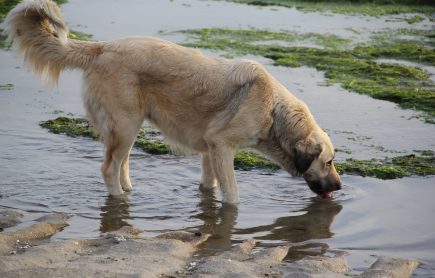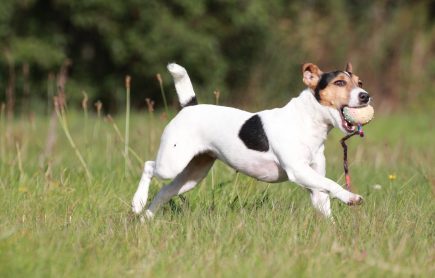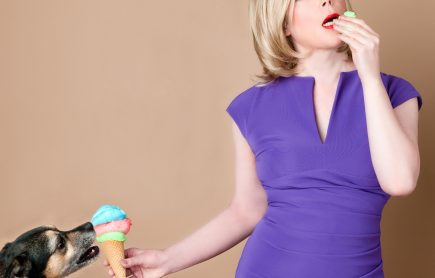Is My Dog Overweight?
Dr. Ashley Lim, Associate Veterinarian
One of the most common questions pet owners ask me as a vet is whether or not their four-legged friend is stacking on the kilos. It can sometimes be difficult to assess a pet that you look at everyday. Here are some simple clues to identifying if your furry friend needs to shed some weight.

Feel along the centre of your pet’s back for the spine and along the sides of his chest for the ribs
1.Can you feel your pet’s ribs and spine?
This is a good one for fluffier breeds but applies to all pets. You should be able your pet’s ribs and spine easily under a thin layer of fat. If you find yourself pushing really hard to feel any semblance of a rib or spine, your pet is overweight. If you can see your pet’s ribs and spine, he is probably underweight.
2. What is his shape from above?
Most animals should be wider at the chest than the belly creating a shape that tapers inward to a waist. The lack of a waist and a broad back are signs of being overweight.

A dog with a normal abdominal tuck
3. What is his shape from the side?
Your pet’s belly should be tucked in when viewed from the side. His tummy should not bulge downwards.
4. What about weight?
Weight can be a helpful indicator and help with measuring progress. Using breed standard weight ranges can help determine your pet’s ideal weight. If you are unsure, this would be a good time to speak to your vet.

Be mindful of what your pet eats
5. Some dietary tips to achieve weight loss:
- Reduce or eliminate any table scraps or extra food from his diet. No chips, sausages or cheese, just regular pet food.
- Read the feeding guidelines on the bag. These show how much food to feed your pet per day. Feed them for their ideal not current weight.
- Get a good measuring cup. Filling the food bowl is not good enough. Use a measuring cup when portioning the food for the day.If this is not working, speak to your veterinarian about weight loss strategies and special diets that can help your pet reach their weight goal.
- If this is not working, speak to your veterinarian about weight loss strategies and special diets that can help your pet reach their weight goal.
- Aim to lose 1% of your pet’s body weight per week until his target weight is achieved.